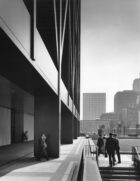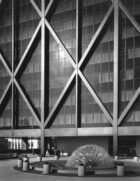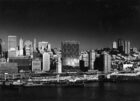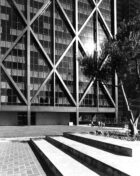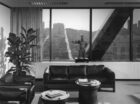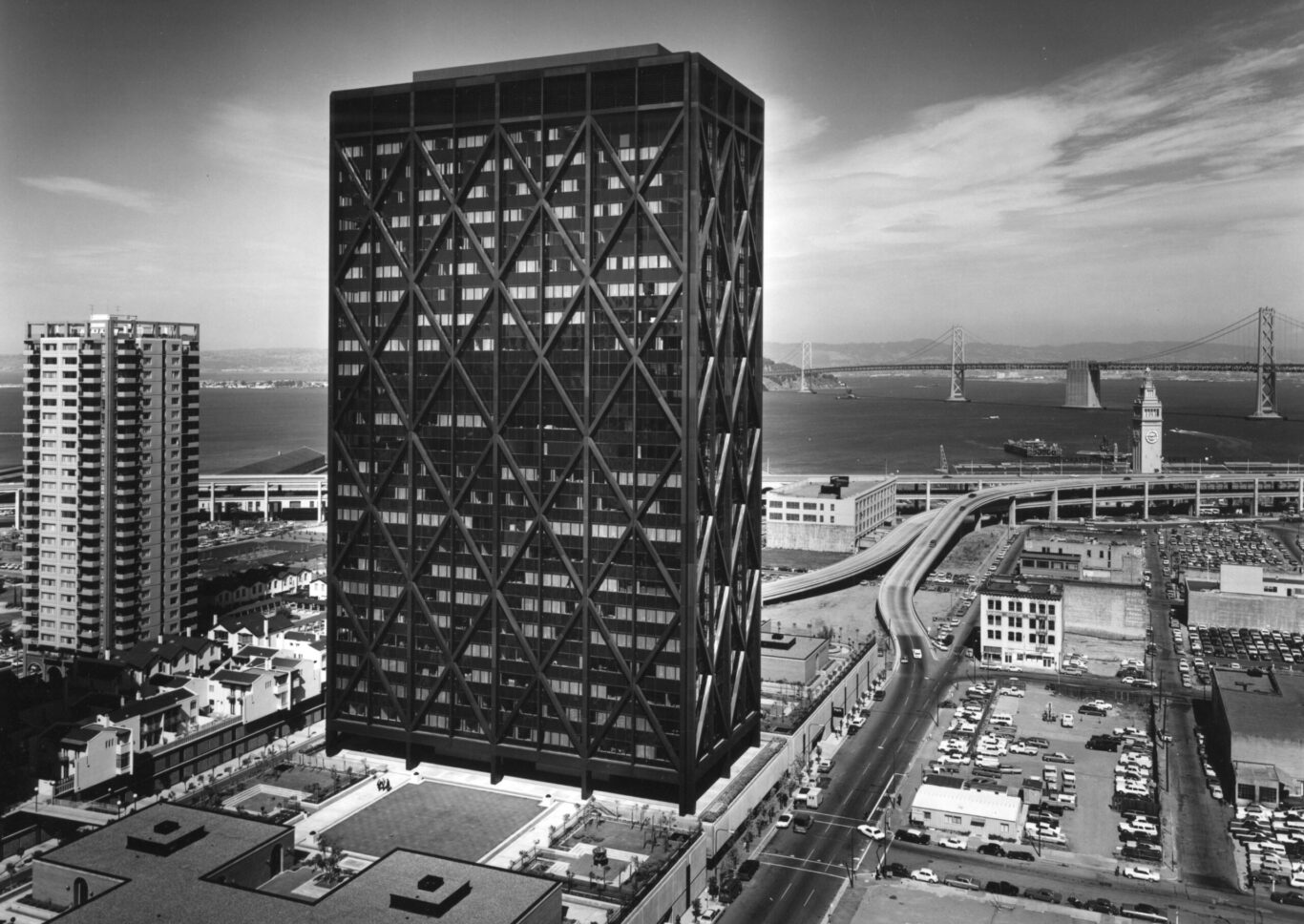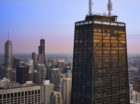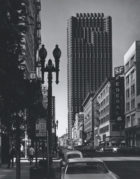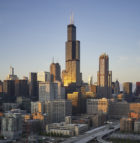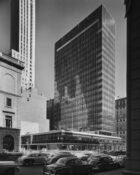A unique structure for a unique site
Characterized by its distinctive diagonal bracing system, One Maritime Plaza is a 25-story tower set astride a three-level public garage, designed by Wurster, Bernardi, and Emmons and DeMars and Reay, at the southern end of the Golden Gateway Center, a residential and commercial redevelopment adjacent to San Francisco Bay. In order to create a 25-story tower atop this existing podium, the building expresses the aesthetic and functional qualities of a technological innovation: the exposed exterior diagonal bracing system—offset from the glass curtain wall behind it, which optimizes the building’s functionality while expressing a strong architectural identity.
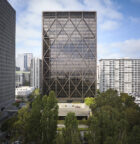
The structural steel framework is a 2 grid at 5-story high cross brace stacked atop one another and placed the external members 18 inches outside the curtain wall facade, serving two purposes: to resist seismic forces and to partially support the vertical load. The diagonal bracing concept came about as a combined effort between architectural designers who desired a building whose appearance expressed a strong structural integration, and structural engineers seeking the most economical solution of preventing seismic damage from earthquakes.
A unique structure for a unique site
Initially proposed by Myron Goldsmith in his master’s thesis at the Illinois Institute of Technology, Alcoa’s structural system is a variant on a solution that SOM explored in several projects from the era, from the Arena at the Oakland Coliseum Complex to the iconic John Hancock Center in Chicago. The latter skyscraper and the Alcoa building are among the first buildings in the U.S. to use a diagonal bracing system, but they differ in several ways, namely that the Alcoa’s system is entirely external to the building itself, about 18” clear to the curtain wall.
Spaced at 50 feet apart, only the columns that rise directly from the ground function as main columns; interstitial vertical members and the diagonal bracing end above the entrance floor. The diagonals are connected to the floor plates every third floor and further connect to suspended tension members where they intersect—between the main columns (i.e. every six floors)—which in turn support floor and spandrel beams. The result is that a considerable portion of the floor load is carried in tension rather than in compression, reducing the weight of the structural steel.
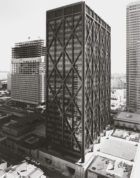
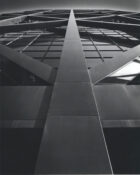
The primary structural members rising from the ground are main columns spaced 50 feet on center. Thus, the design simultaneously maximizes usable interior space and flexibility while minimizing columnar interference with the parking structure, the garage roof is 2 stories above street level, incorporating the tower entrance lobby and landscaped plazas with a sculptural fountain and four gardens. Accessed by four open flights of stairs and a set of escalators, a handsomely landscaped plaza features a large fountain and four sunken gardens.
